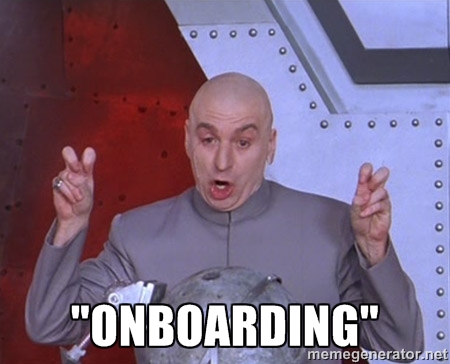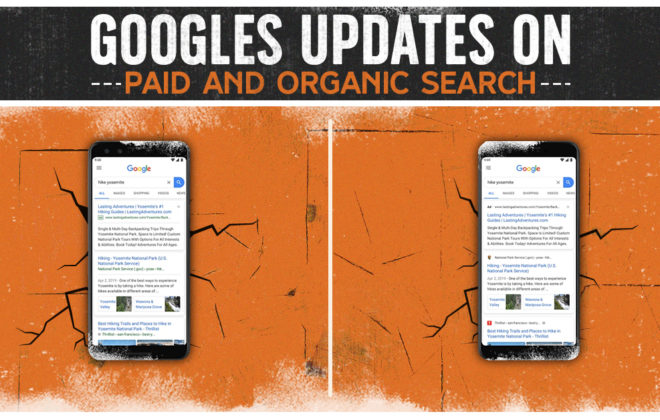4 Simple Steps To Onboarding PPC Clients Like A Pro
Account transitions are a necessary component to any agency’s workflow. Onboarding new clients, whether they have established campaigns or need to help getting started from scratch, involves a high amount of clear, effective communication. Without it, the new client you and your agency worked so hard to land will be high tailing it to your competitor’s doorstep before you can manage to even utter your first-choice curse word.
Do All The Things
In the heat of the moment and in all of the excitement of having a new client, understanding these simple steps will help you stay organized while also sorting out the many must-needed details of your burgeoning relationship:
- Become familiar with the client’s business, industry and competitors
- Clearly convey what your expectations are, and most importantly, know theirs
- Establish and maintain open lines of communication; update frequently
- Set a meeting for a comprehensive review; discuss wins and identify shortcomings
Simply adhering to a common-sense approach that truly fosters a productive relationship with the client straight out of the gate and over the lifetime of your partnership.
Become Familiar With The Client’s Business, Industry And Competitors
The client has taken the time to research your agency, determine your strengths and financially commit to your services. I would argue that it’s not just recommended, but you owe it to them to become an expert on on their business. The client is probably (hopefully) already an expert on their business, but what they’ll want to know is what is an expert’s take within the context of digital marketing (SEO/PPC). Besides having strategic benefits, the client will take note of your genuine interest and respond in kind with more details and insight into their business, more frequent communication and a better working relationship overall. If you invest in them, they will invest in you.
Convey What Your Expectations Are (And Know Theirs)
Does the client have an unlimited budget as long as the CPL is below a certain amount? Is there specific targeting requirements the client needs in order to reach their ideal customer? Does the client experience seasonal trends and, if so, are they in their peak or lull? Do some product groups require a certain ROAS in order to maintain profitability? These are just some of the questions that you need to be asking in order to ensure that both yourself and the client are clear with one another. You need to have them tell you what the real success metric is. I’ve had some clients give pause when asked what their ideal return on ad spend is, so try rephrasing the questions to help them think of it in another, non marketing-speak kind of way (how much money would you be comfortable spending in order to sell a $x product?).
On the flip side, the client needs to hear about exactly what you plan on doing. Will you be setting up a brand new account for them? A new campaign? What type of campaign? What purpose does it serve, and how does it tie into their revenue or business goals? Are you modifying existing campaigns? If so, do you have their permission? Are there any aspects that you aren’t allowed to modify?
Establish And Maintain Open Lines Of Communication
New clients are always interested in how their account is performing. It’s almost a cardinal rule it’s so ubiquitous. Knowing this, use your own follow-ups and performance reviews as a trigger to update the client. I generally provide a performance follow-up once a week after new campaign launches or significant alterations for my own, internal purposes. If these are written in a somewhat neutral manner, it’s very easy to copy+paste your sum-up into an email, along with a quick personal message, and send it off. Boom, you’ve now made yourself appear organized, professional and most importantly you’ve helped make the client feel that they’re still a part of the process.
It’s also important to not flinch when the performance isn’t going the way you want. In fact, use it as an opportunity to ask how things are going in the trenches, if they’ve felt an impact, or if they might have additional suggestions (previously unmentioned promotion, new product/service in the works etc). Put in another way, if there’s one thing I’m sure of it’s that over-communication doesn’t occur in this context; a client is never going to think to themselves “man, this guy gives me account updates far too often, what a jerk”.
Set A Meeting To Discuss Wins And Identify Shortcomings
Set up a meeting with the client to discuss performance from the beginning of your partnership to date. For this sort of meeting, I would definitely recommend doing a screenshare if this isn’t already being employed. Speaking to a client in numbers, percentages and other metrics ad infinitum is less useful than you might think. Having the client following along on a screenshare will allow you to have the numbers do some of their own talking, leaving more time for discussion rather than just reciting your favorite stats.
Use this as an opportunity to tout your wins and show where their account is the strongest. They’re of course going to want to know how their doing well, but also be sure to explain as best as you can why you think they’re doing well. Provide insight, try and relate the numbers to their customers or business, make the connection or at least put it in some sort of context.
On the other hand, if the results are poor or are severely underwhelming, use each negative metric to segue into describing your plan of action to salvage that number. While most clients will want to know why something underpeformed, they’re always waiting with baited breath to hear what you intend to do about it. If you’re having to break several pieces of bad news, concentrate your meeting preparation efforts on developing a comeback strategy. Honesty goes a long way here; don’t omit what you consider to be bad because the impression that you’ll give will be equally so.
Whether you’re optimizing local SEO, improving landing page experiences via CRO or are working within the world of paid search, client management has been, and always will be, a staple of the agency experience.
What client communication tactics do you use most and how has it helped you? Do you have any special methods in your toolbelt that you use to help maintain an excellent client relationship? I’d love to hear about them! Comment below.
Tags In
Jeff Stuart
Tell Us Your Goals
Recent Posts
- Google PMax: Get the Most Out of Your Ad Campaigns While Combating Fraud
- Lead Ads Don’t Have to Suck: How to Leverage Them Correctly
- Why More Expensive PPC Ads are Almost Always Worth It
- Unlock the Secrets of Organic CPA: The Ultimate Guide to Cost Per Acquisition
- Secrets We’ve Learned from Years Working with Paid Account Reps at Meta, TikTok, LinkedIn and Google



